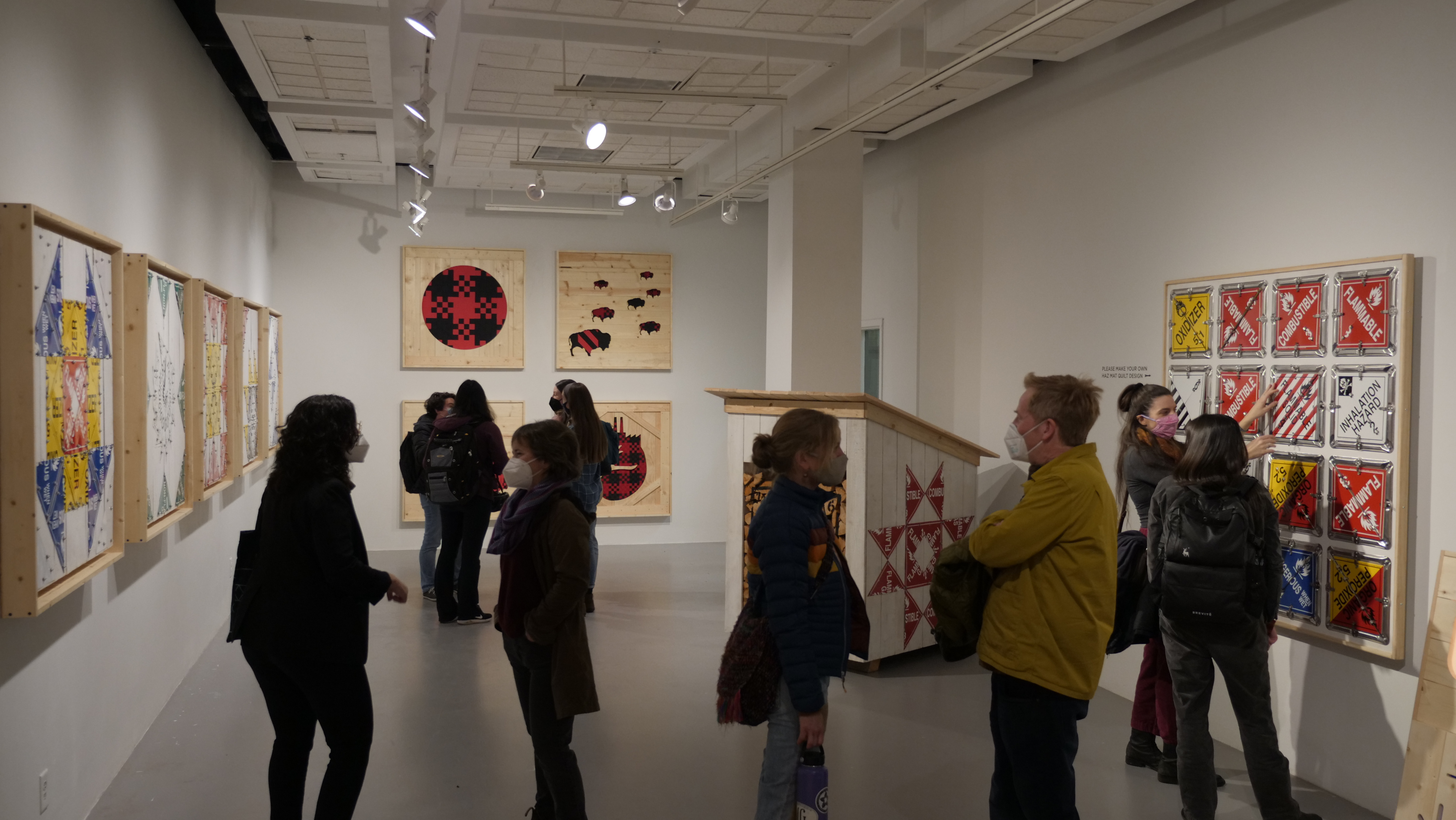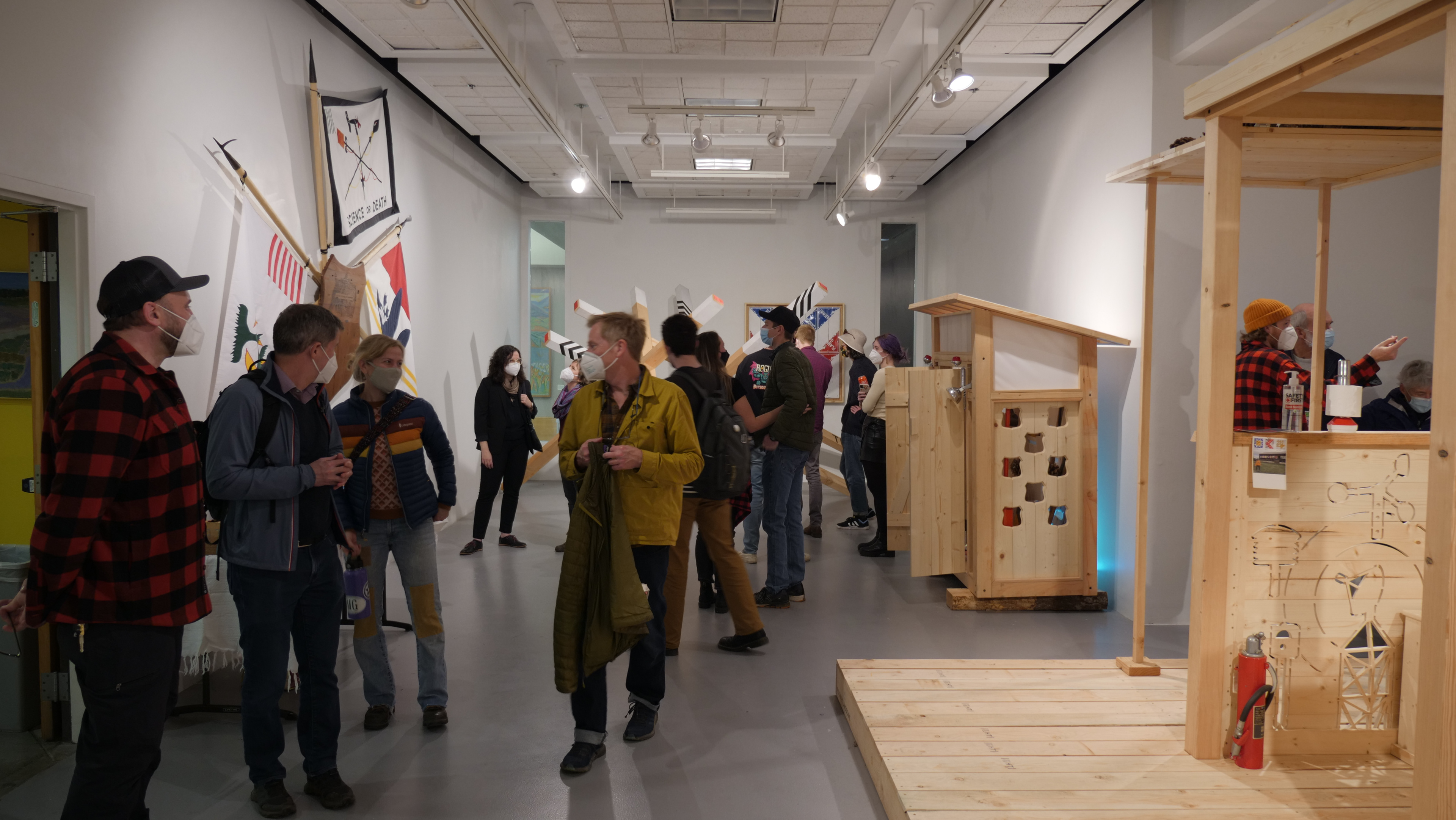The Landscape Makers exhibition was a collaborative group installation featuring landscape-inspired work inspired by Pacific Northwest forest culture. The following pieces were my contribution to this exhibition.
The exhibition occurred at the LaVerne Krause Gallery in Lawerence Hall at the University of Oregon in Eugene, Oregon, from January 29th to February 3rd, 2022. Collaborators included David Buckley Borden, Ignacio Lopez Buson, Hannah Chapin, Tom Coates, Seth Eddy, Michael Geffel, Celia Hensey, Grant Olson, Abby Pierce, Kennedy Rauh, Masayo Simon, Nancy Silvers, Dr. Fred Swanson, and Ian Vierck.
Loo with a View, modular panels, pine, doug-fir, marine-grade canvas, assorted lookout tools, weather instruments, projectors, assorted hardware, 11' x 11.5' x 11.5.
This structure references historic fire lookout tower architecture, outfitted with a series of science-communication modular panels. Inside the structure is an outhouse kit featuring a collection of objects such as a toilet, maps, a fire extinguisher, and a telephone with a direct line to the fire marshall. This structure was partially used as a study to inform the Air Shed MLA thesis project.
In collaboration with David Buckley Borden, Hannah Chapin, Kennedy Rauh, Nancy Silvers, and Ian Vierck.
Lookout Loo, Panel 1/3, Messages and Signals, 44" x 44", pine, assorted hardware.
Communications occupy much of our collective airspace. Sensors and instrumentation collect environmental data, including relevant fire risk information. Cellular technology and radio telecommunications share this information, using trillions of antennas, and emitting radiation beams, which connect people worldwide and contribute to a new augmented electromagnetic environment.
University of Oregon graduate students note the CNC routing during an exhibition presented at the gallery.
Lookout Loo, Panel 2/3, Sensing the Invisible, 44" x 44", pine, anemometers, paint, assorted hardware.
Techno-scientific instruments allow us to visualize air and the atmosphere, contributing to how we perceive our environment. Through instrumentation, we can understand more complex processes that are occurring, such as gas exchanges in the atmosphere and wind patterns. This enhanced understanding can lead to more ecological empathy with these invisible natural processes.
It is also important to note that while these instruments have opened our minds to new data and information, they can also be limiting in how we perceive them. If we are always studying air, or any ecological process, through the same instrument, our findings will be heavily influenced by the device.
Gallery fans transform the anemometers into a kinetic installation.
Lookout Loo, Panel 3/3, Wetlands, 44" x 44", pine, assorted hardware.
Designed by David Buckley Borden and fabricated in collaboration with Kennedy Rauh.
Lightwood Boombox, Gentrification #2, 46" x 46", pine, marine-grade canvas, blue tarp, vinyl, heat lamp, assorted hardware.
In collaboration with David Buckley Borden, Pat Falco, Kennedy Rauh, Nancy Silvers, and Ian Vierck.
Lightwood Boombox, US Ecology Distress Sign, 46" x 46", pine, marine-grade canvas, paint, heat lamps, assorted hardware.
In collaboration with David Buckley Borden, Pat Falco, Kennedy Rauh, and Nancy Silvers.



Exhibition opening photos taken by Ignacio Buson-Lopez.